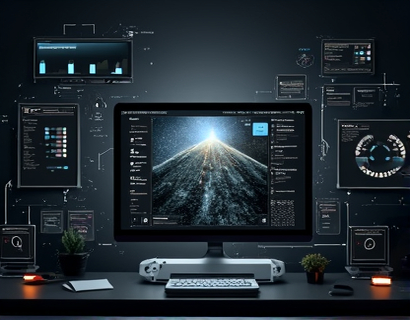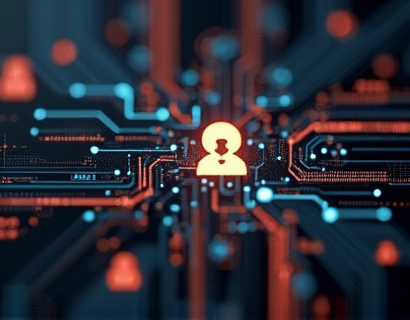Empowering Lifelong Learning: Accessible Educational Resources and Interactive Courses for Students and Lifelong Learners
In the rapidly evolving landscape of education, the importance of accessible educational resources and interactive courses cannot be overstated. These tools are pivotal in empowering students and lifelong learners to pursue their educational goals with ease and enthusiasm. The digital age has opened up unprecedented opportunities for learning, making it possible for individuals from all walks of life to access a wealth of knowledge and educational materials. This article delves into the significance of these resources, exploring how they can transform the educational journey and foster a lifelong love of learning.
The concept of lifelong learning is rooted in the understanding that education is not confined to the traditional classroom setting or limited to a specific age group. It is a continuous process that spans an individual's entire life, driven by personal interests, career goals, and the ever-changing demands of the world. In this context, accessible educational resources play a crucial role in democratizing knowledge, ensuring that everyone has the opportunity to learn and grow, regardless of their background or circumstances.
Accessible educational resources are designed to be usable by as many people as possible, including those with disabilities. This inclusivity is essential in creating an equitable learning environment. Digital platforms that offer a comprehensive library of articles, e-books, and interactive courses are at the forefront of this movement. These platforms not only provide a vast array of content but also ensure that the content is accessible to all users, adhering to web accessibility standards such as the Web Content Accessibility Guidelines (WCAG).
One of the key benefits of these digital resources is their flexibility. Students and lifelong learners can access materials at their own pace, revisiting complex concepts or moving ahead when ready. This self-paced learning environment is particularly beneficial for those with busy schedules or diverse learning styles. Interactive courses, in particular, offer a dynamic and engaging way to learn, incorporating multimedia elements such as videos, quizzes, and interactive simulations that cater to different learning preferences.
For students, these resources are invaluable tools that complement traditional education. They provide additional support and enrichment, helping to deepen understanding and retain information. Interactive courses, with their structured approach and immediate feedback, can be especially helpful in mastering specific skills or subjects. Lifelong learners, on the other hand, can explore a wide range of topics that interest them, from science and technology to arts and humanities, without the constraints of a formal curriculum.
The content offered by these platforms is diverse and extensive. Articles cover a broad spectrum of subjects, from academic research to practical guides and personal development tips. E-books provide in-depth knowledge on specific topics, often written by experts in their fields. Interactive courses range from beginner-level introductions to advanced specialized training, ensuring there is something for everyone. This variety ensures that learners can find content that aligns with their interests and learning objectives.
Moreover, the interactive nature of these courses enhances the learning experience. Gamification elements, such as badges and points, motivate learners to progress and achieve their goals. Discussion forums and peer interactions foster a sense of community, allowing learners to share insights, ask questions, and collaborate on projects. This social aspect of learning is crucial in maintaining engagement and providing support, which is often lacking in traditional educational settings.
The accessibility of these resources extends beyond just the content itself. The platforms are designed to be user-friendly, with intuitive interfaces that make navigation seamless. Features such as text-to-speech, adjustable font sizes, and high-contrast modes ensure that users with visual impairments can access the content comfortably. Closed captions and transcripts for video content make it accessible to those who are deaf or hard of hearing. These thoughtful design choices demonstrate a commitment to inclusivity and equal access to education.
Another significant advantage of these digital platforms is their scalability. As new content is added and existing content is updated, learners always have access to the most current and relevant information. This is particularly important in fields that evolve rapidly, such as technology and medicine. The ability to stay updated with the latest developments is a valuable asset for both students and lifelong learners, equipping them with the knowledge needed to succeed in their chosen paths.
Furthermore, these platforms often offer personalized learning paths, using algorithms to recommend content based on a user's interests and progress. This personalized approach helps learners stay focused and motivated, as they are guided through a curated selection of materials that align with their goals. The data collected from user interactions can also be used to improve the platform, ensuring that it continues to meet the needs of its diverse user base.
The impact of accessible educational resources and interactive courses extends beyond individual learners. On a broader scale, these tools contribute to the development of a more informed and skilled society. By providing opportunities for continuous learning, they help bridge the knowledge gap and reduce educational inequalities. This, in turn, can lead to economic growth and social progress, as a well-educated population is better equipped to innovate and solve complex problems.
In conclusion, the availability of accessible educational resources and interactive courses represents a significant advancement in the field of education. These tools empower students and lifelong learners to take control of their educational journeys, fostering a love of learning that can last a lifetime. As technology continues to evolve, the potential for even more innovative and effective learning solutions is vast. Embracing these resources is not just about acquiring knowledge; it is about embracing a mindset of continuous growth and adaptation in an ever-changing world.










































